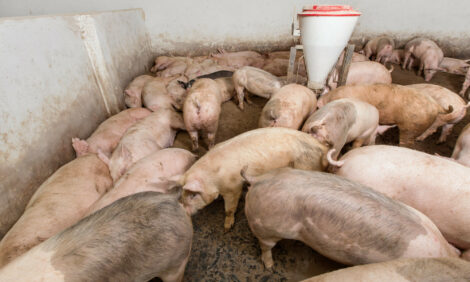



Effects of Increasing Dietary Bakery By-Product on Growing-Finishing Pig Growth Performance and Carcass Quality
Feeding bakery by-products had adverse effects on feed efficiency, caloric efficiency and belly fat quality reported C.B. Paulk and co-authors at Kansas State University and Iowa State University in their presentation at the 2012 Kansas Swine Industry Day.A total of 1,263 pigs (PIC 337 × 1050; initially 77.8lb) were used in a 102-day study
to determine the effects of dietary bakery by-product on pig growth performance and
carcass quality.
Pigs were randomly assigned to pens based on gender (14 barrow pens, 11 gilt pens and 23 mixed-gender pens).
Pens of pigs were allotted to one of three dietary
treatments in a completely randomised design while balancing for initial bodyweight and gender. Dietary treatments included 0, 7.5 and 15 per cent bakery by-product.
On day 84, the five heaviest pigs from each pen (determined visually) were sold according to the normal
marketing procedure of the farm. On day 102, the remaining pigs were individually
tattooed by pen number and sent to harvest to allow for collection of carcass data. On
days 84 and 102, the median weight market pig from every pen was selected (determined
visually) for collection of carcass quality measurements.
Overall (days 0 to 102), increasing bakery by-product worsened (linear, P<0.02) feed to gain ratio (F/G) and
caloric efficiency on a metabolisable energy (ME) basis and pigs fed diets containing 7.5 per cent bakery by-product
tended to have the lowest (quadratic, P<0.07) average daily gain (ADG).
For pigs marketed on day 102, no differences (P>0.21) were observed in carcass characteristics.
For pigs sub-sampled on day
84, loin colour score increased (linear; P<0.02) and belly fat iodine value (IV) increased
numerically (linear, P<0.09) as the amount of bakery by-product increased.
Pigs sub-sampled on day 102 had decreased (linear, P<0.04) middle and edge belly thickness,
increased (linear, P<0.001; quadratic, P<0.07) IV and numerically lower (linear,
P<0.09) kill floor pH and belly weight as the amount of dietary bakery by-product
increased.
Pigs fed 15 per cent bakery by-product had the lowest (quadratic, P<0.05) belly
temperature and belly firmness score. With the exception of belly fat IV, bakery
by-products had few negative effects on carcass quality.
Paulk and co-authors concluded that the negative effects of bakery by-product on feed efficiency, caloric efficiency on an ME
basis and belly fat IV should be taken into consideration when using bakery by-product in diet formulation.
Reference
Paulk C.B., S. Nitikanchana, S.S. Dritz, M.D. Tokach, R.D. Goodband, J.M. DeRouchey, J.L. Nelssen and K.J. Prusa. 2012. Effects of increasing dietary bakery by-product on growing-finishing pig growth performance and carcass quality. Proceedings of the Kansas State University Swine Industry Day 2012, p155-165.
Further ReadingYou can view the full proceedings by clicking here. |
January 2013








